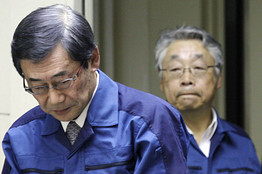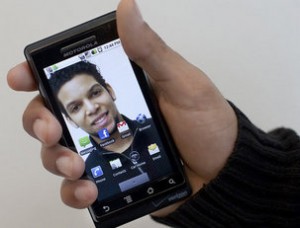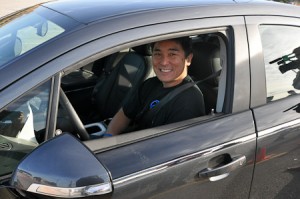Keep Repetitive Learning ‘Up Front’
Posted on July 11, 2011
Filed Under Technology, Uncategorized | Leave a Comment
 Scott Nesbitt, a technical writing colleague on the Web, raises an interesting question: How do we write manuals or procedures with steps that might involve repetitive skills or insights without bogging the reader down?
Scott Nesbitt, a technical writing colleague on the Web, raises an interesting question: How do we write manuals or procedures with steps that might involve repetitive skills or insights without bogging the reader down?
Repetition, Scott notes, is an effective way of learning but “it gets tedious quite quickly.” So how do we keep procedures from working against themselves by inflicting too much cross-referencing on the reader?
A good question. I haven’t talked with Dennis Owen about this, but he can chime in whenever he pleases.
An approach that occurs to Scott is to state something like this af the beginning of a procedure:
Read more
Another Nuclear Utility Muzzled in a Crisis
Posted on April 28, 2011
Filed Under Uncategorized | Leave a Comment
 There is something about nuclear power emergency communication that seems extra daunting for utilities. Tokyo Electric Power Co., our colleague, Doug Bedell, notes, just turned its role as spokesperson for the Fukushima plant over to the Japanese government. That’s what happened at TMI-2 in 1979, when Harold Denton, of the NRC, took over from Metropolitan Edison Co. It took longer at Fukushima, but the utility couldn’t hold on to its lead communication role there either.
There is something about nuclear power emergency communication that seems extra daunting for utilities. Tokyo Electric Power Co., our colleague, Doug Bedell, notes, just turned its role as spokesperson for the Fukushima plant over to the Japanese government. That’s what happened at TMI-2 in 1979, when Harold Denton, of the NRC, took over from Metropolitan Edison Co. It took longer at Fukushima, but the utility couldn’t hold on to its lead communication role there either.
Nuclear Communication: A Discipline In Itself
Posted on April 12, 2011
Filed Under Uncategorized | 1 Comment
A further word on communication as an element in the Fukushima accident and as a factor in nuclear power’s prospects overall: Tokyo Electric Power Co. has been apologizing for communication lapses in the Japanese crisis and U.S. nuclear power officials are conceding that the industry has “a considerable communications challenge…as we move forward.”
“We’re going to undertake it,” said Steve Kerekes, a spokesman for the Nuclear Energy Institute in the U.S., “Exactly how we’re going to do that, we’re still getting our heads around that.”
 It all sounds so familiar. Thirty-two years ago in the aftermath of the accident at Three Mile Island Unit 2, communication was a major focus, at least by the plant’s owner at the time, General Public Utilities Corp. (GPU).
It all sounds so familiar. Thirty-two years ago in the aftermath of the accident at Three Mile Island Unit 2, communication was a major focus, at least by the plant’s owner at the time, General Public Utilities Corp. (GPU).
Under duress, GPU belatedly understood that communication needs to be practiced as a discipline, every bit as much as nuclear technology itself. Some other nuclear power companies seemed to understand that at the time; others paid little heed to what was happening at TMI. It wasn’t “their” accident, after all.
Read more
Attention Should Be Paid, Because It’s Appreciated
Posted on April 25, 2010
Filed Under Uncategorized | Leave a Comment
Our attention was drawn to two stories in the Sunday papers on means of paying attention to others, once you recognize that paying attention is important. For teenagers with electronic devices and lots of friends, that’s a no brainer. For busy doctors, however, paying attention to patients in an effective manner while spending as little time with them as necessary make take some – attention.
Ivey Dejesus in The Patriot-News, covering Central Pennsylvania, writes that, according to the Kaiser Family Foundation, kids from eight to 18 plugged into electronic media spend 53 hours a week “texting, e-mailing, tweeting, posting on Facebook, catching a favorite show on hulu.com or playing ‘Dungeon Hunter.'” That amounts to an average of seven hours and 38 minutes a day. With multitasking on their media, it comes to more in terms of content created or controlled.
Dejesus adds that cell phone texting “has become the preferred mode of communication among teens,” according to the Pew Center.
Parents don’t get as upset over their kids’ fixation on electronic media as you might think. That’s because the odds are increased that they at least know where the kids are, or can call them on their cell phones to find out. Some parents buy GPS-type family locator phone plans to help them keep track of their kids. And some even call them when they’re in school, at a math class for instance, definitely not cool.
When we were growing up, model railroads, chemistry sets, bikes or dolls were the thing. We tended to stay close to home because meeting and dating the opposite sex was sometimes more than a little trying. Then, of course, along came television, and we spent hours glued to the tube.
 Having kids in constant touch through texting or other forms of computer communication can presumably be a good thing because it makes forming relationships easier and more conversational, and that’s healthy. Some kids, of course, use unfortunate texting judgment in the photos they share, but educational campaigns are catching up with those misguided practices.
Having kids in constant touch through texting or other forms of computer communication can presumably be a good thing because it makes forming relationships easier and more conversational, and that’s healthy. Some kids, of course, use unfortunate texting judgment in the photos they share, but educational campaigns are catching up with those misguided practices.
So let the kids be connected; maybe it will translate into a better connected country and society when they grow up.
Doctors should already know the value of paying heed to their patients and how to accomplish that in their brief encounters with them. Many do, but how many of them realize it’s best to sit with a patient rather than stand before them? Supposedly mannerisms that communicate well are taught in medical schools, but doctors get too busy to remember what they may feel are pretty subtle distinctions.
Not really so, reports Alan Bavley for the McClatchy newspapers in The Lebanon (Pa.) Daily News. Researchers at the University of Kansas Hospital in Kansas City, Kan., have found that doctors who sit with their patients get “significantly higher marks for satisfaction,” and actually spend less time with their patients than those who stand while they discuss health issues with them.
Unfortunately, hospital rooms aren’t designed for physician sitting – chairs are often stuffed with belongings or visitors. A doctor may have to sit on the foot of the bed, but he or she probably should. It’s a better communication locale than standing.
When patients were asked to estimate the time a given doctor spent with them, Bavley reports, “those who got a standing visit said three minutes, 44 seconds, while those who got a sitting visit said five minutes, 14 seconds – a significantly longer time.” Actually, the doctor “spent one minute and 28 seconds with patients when he stood and one minute, four seconds when he sat,” not a statisically significant difference but a fascinating one. (The researcher was outside the rooms with a stopwatch.)
When people feel that attention is being paid to them, they tend to give more credit for the gesture than the time actually spent. “The doctor took the time to sit and listen,” one said. “He sat down long enough to get all of my questions answered.”
But note that he actually spent less time on average when he was sitting.
To treat others enthusiastically, as kids do with their electronic devices, or caringly as empathetic doctors do when they sit with a patient, is to pay them attention in a manner that’s appreciated in given circumstances. Pay attention to that, folks. – Doug Bedell
‘Augmented Reality’ On the Highways
Posted on March 19, 2010
Filed Under Technology, Uncategorized | Leave a Comment
We practically launched Insights with a post about electric cars and our hopes that Chevrolet’s Volt will indeed be launched in November. Now here’s Guy Kawasaki test-driving a Volt at the SXSW new media conference in Austin.
It runs! It handles nicely! Its approximate range will be 400 miles on an eight-gallon tank of gas and the electric motor will always power the car! This last is a reference to the Volt being a “series” hybrid. Existing hybrids are “parallel” vehicles – “the electric motor powers the car for low speeds, and the gasoline engine kicks in for greater acceleration and higher speeds,” Kawasaki advises.
 It’s interesting (though dismaying) to note that the Volt test-driving was done in the parking lot of an Austin shopping mall where most of the stores were out of business – a hapless setting not unlike Detroit itself.
It’s interesting (though dismaying) to note that the Volt test-driving was done in the parking lot of an Austin shopping mall where most of the stores were out of business – a hapless setting not unlike Detroit itself.
With electric cars, though, we may be at the symbolic juncture of two eras in the U.S.: the decline of the old manufacturing economy and the rise of a new innovation-powered one that’s good for renewed production of industrial goods and jobs. We certainly need that kind of good fortune. And we’re wishing the Volt all success (at a reasonable price, of course).
Now, if electrically-powered transmission can be coupled with GM’s new “augmented reality windshield” we may really have something! GM says the new windshield can highlight landmarks, obstacles and road edges before a driver’s eyes, in real time. It can point out to drivers potential hazards, such as a running animal, even in foggy or dark conditions.
Boy, that would be great. Maybe “augmented reality” can even catch sight of a revived, prosperous and reliable industrial economy for us all. Right on at the new GM! – Doug Bedell
« go backRecently
- Presentations With Forethought
- Technical Writing’s Lineage – Surely It’s Deeper than Digital
- At the Holidays, Twitting Amazon
- Successful Cookie Baking – From Mom, an Acknowledged Expert
- Slides for a Tech Writer’s Craft
- Digital or Not, Be Clear
- Being Watchful About Digital Designs…
- When Proposals Don’t Click, Keep Making Them Anyway
- Like a Good Gardener, Help an Enterprise Keep Itself Current
- We’re Leaders All, And Need to Think That Way
Categories
Archives
- January 2017
- December 2016
- November 2016
- October 2016
- September 2016
- August 2016
- July 2016
- June 2016
- May 2016
- April 2016
- March 2016
- February 2016
- January 2016
- December 2015
- November 2015
- October 2015
- September 2015
- August 2015
- July 2015
- June 2015
- May 2015
- April 2015
- March 2015
- February 2015
- January 2015
- December 2014
- November 2014
- October 2014
- March 2014
- February 2014
- January 2014
- December 2013
- November 2013
- October 2013
- September 2013
- August 2013
- July 2013
- June 2013
- May 2013
- April 2013
- March 2013
- February 2013
- January 2013
- December 2012
- November 2012
- October 2012
- September 2012
- August 2012
- July 2012
- June 2012
- May 2012
- April 2012
- March 2012
- February 2012
- January 2012
- December 2011
- November 2011
- October 2011
- September 2011
- August 2011
- July 2011
- June 2011
- May 2011
- April 2011
- March 2011
- February 2011
- January 2011
- December 2010
- November 2010
- October 2010
- September 2010
- August 2010
- July 2010
- June 2010
- May 2010
- April 2010
- March 2010
- February 2010
- January 2010